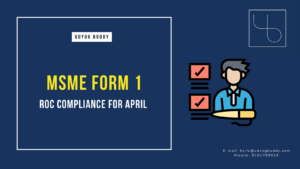Rights Issue
426+ Clients Served Globally

Read More
The team is so responsive and always solve the questions
that we have regarding work.
They are professional and the quality of work is best.
I'll definitely recommend this team to everyone!
Outline
Rights issue has been a preferred mode of raising capital from the existing shareholders of a company as there are no prescriptive conditions on the issue price. Companies have the flexibility to determine issue price in case of rights issue under company law as well as SEBI regulations (applicable to listed companies). This gives companies much-needed flexibility to structure a capital raise from existing investors, especially in times of need.
In the rights issue, the new shares are being issued and offered to the existing shareholders of the company at a discount to the current market price.
The shareholders have the right but not the obligation to subscribe to the newly issued share in proportion to their existing holdings.
They also have to check out the record date and ex-date for the subscription. Beyond which the subscription becomes null and void.
Section 62 of the Companies Act, 2013 regulates the process of rights issue and also provides the pre-emptive right to the shareholders to subscribe to such shares. Therefore, the right issue acts as a formal invitation from the company to its existing shareholders to buy additional shares.
Key Objectives for Right Issue of Shares
The Key Objectives for the Rights Issue of shares are as follows:
The Rights Issue is done to increase the subscribed capital of the Company.
The shares are issued to the existing shareholders of the Company in proportion to their current share capital issued earlier.
The Rights Issue is done by sending a letter of offer to the shareholders of the Company.
The notice of the issue of shares should be sent to the shareholders by offering them an option to take the shares offered to them.
The shareholders should answer the notice within 15 days or a maximum of 30 days.
The shareholder does not respond to the Company’s notice of issuing shares; then the offer will be deemed to be declined by the shareholders.
The notice of shares issue should be sent through registered post or speed post or any electronic mode to the shareholders.
The Reason behind issuing the Rights Issue
By issuing the Rights issue, the Company gets sufficient funds and besides gives the right to the existing shareholders of the Company to purchase the shares at a discounted price. Apart from raising the Capital of the Company, The Rights issue bestows other advantages like-Provides ease for raising Fund, Converting the unsubscribed share capital to the Subscribed share capital of the Company, Favourable method of raising the Capital which results in expansion without Debt.
Conditions relating to Rights Issue
A company needs to fulfill the following conditions before undergoing the process of Rights Issue:
Every unlisted company making the offer of the rights issue needs to get its securities converted into a dematerialized form. The KMP (Key Managerial Personnel), Directors and Promoters hold these securities as per the provisions of the Depositories Act, 1996;
Any shareholder who intends to subscribe to the shares offered also needs to get their securities converted into dematerialised form;
A company needs to check whether its authorised capital is enough to issue the right shares. If not, then the company needs to alter the capital clause of its MOA (Memorandum of Association)
A company needs to verify whether the AOA (Article of Association) authorises the issue of the right shares or not. If not, then the company also needs to alter AOA by including the provision of the right issue;
A company can issue the right shares only to the shareholders of the company.
Who can apply for Right Issue?
As per section 62 of the Companies Act, 2013 the following entities can apply for the Right Issue:
Existing Shareholders: A company can issue the right shares to its existing shareholders in proportion to their shareholdings by sending them a letter of offer. However, a company needs to fulfil the following conditions for issuing rights shares:
1. A company needs to send a letter of offer to the shareholders specifying the number of shares offered. The shareholders must accept the offer in a minimum of 15 days and a maximum of 30 days;
2. If the shareholders do not accept the offer within the prescribed period, the same offer stands declined;
3. The letter of offer also includes a right to renounce the shares offered in favour of some other person;
4. After the expiry of the prescribed period or on receipt of an intimation from the shareholder regarding their rejection to the shares offered, the BOD (Board of Directors) may dispose of the shares in a manner advantageous to both the company and shareholders.
Employees: A company can issue the right shares to its employee under a scheme of ESOP (Employee Stock Option Plan) by passing a special resolution and complying with specified conditions.
Any other person: A company can also issue the right shares to any other person by passing a Special Resolution either for cash or for consideration other than cash. However, the registered valuer determines the price of such shares by making a valuation report subject to prescribed conditions.





